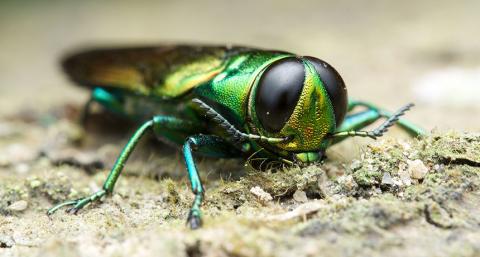
By Susan Milius
An invasive beetle has unexpected — and potentially troublesome — tastes in trees. Now two new studies are clarifying the insects’ dining habits, researchers reported at the annual Entomological Society of America meeting.
Metallic-green Asian beetles called emerald ash borers (Agrilus planipennis) have devastated wide swaths of forest in North America. For years, researchers believed that only various kinds of ash trees were at risk. But in 2014, researchers noticed infestations in white fringe trees (Chionanthus virginicus), a multi-stemmed tree native to the southeastern United States with flowers like a cluster of streamers. And after looking at trees related to ashes, researchers reported lab evidence in 2017 that the beetle larvae can grow to adulthood in the Manzanilla variety of commercial olive trees (Olea europaea). Whether the beetle poses a serious or slight risk to the overlooked targets is still being researched.
Emerald ash borers, accidentally imported probably in wood packing materials during the 1980s or 1990s, have killed hundreds of millions of ash trees in 31 states and two Canadian provinces. Larvae chewing tunnels through trees’ internal nutrient channels can doom a tree. It’s “a major, major pest,” says entomologist Jackie Hoban of the University of Maryland in College Park. “It’s so sad — you see entire patches of trees just dead.”
Lab tests of the recently discovered threat to olive trees show that adult borers don’t eat as much of these leaves as they do of ash leaves, forest entomologist Donnie Peterson of Wright State University in Dayton, Ohio, reported November 6 at the meeting. These adults also die prematurely if those leaves are the only food option. But adult borers’ distaste for this variety of olive doesn’t yet mean the trees are safe. Female beetles feeding on ash trees might, in theory, fly to a nearby olive to lay eggs.
To compare beetles’ preferences for laying eggs on olive versus ash will take a larger study. But Peterson’s first results are a little worrying. When he put olives and green ashes in a known infested zone, one of the few eggs he found was on an olive tree.

